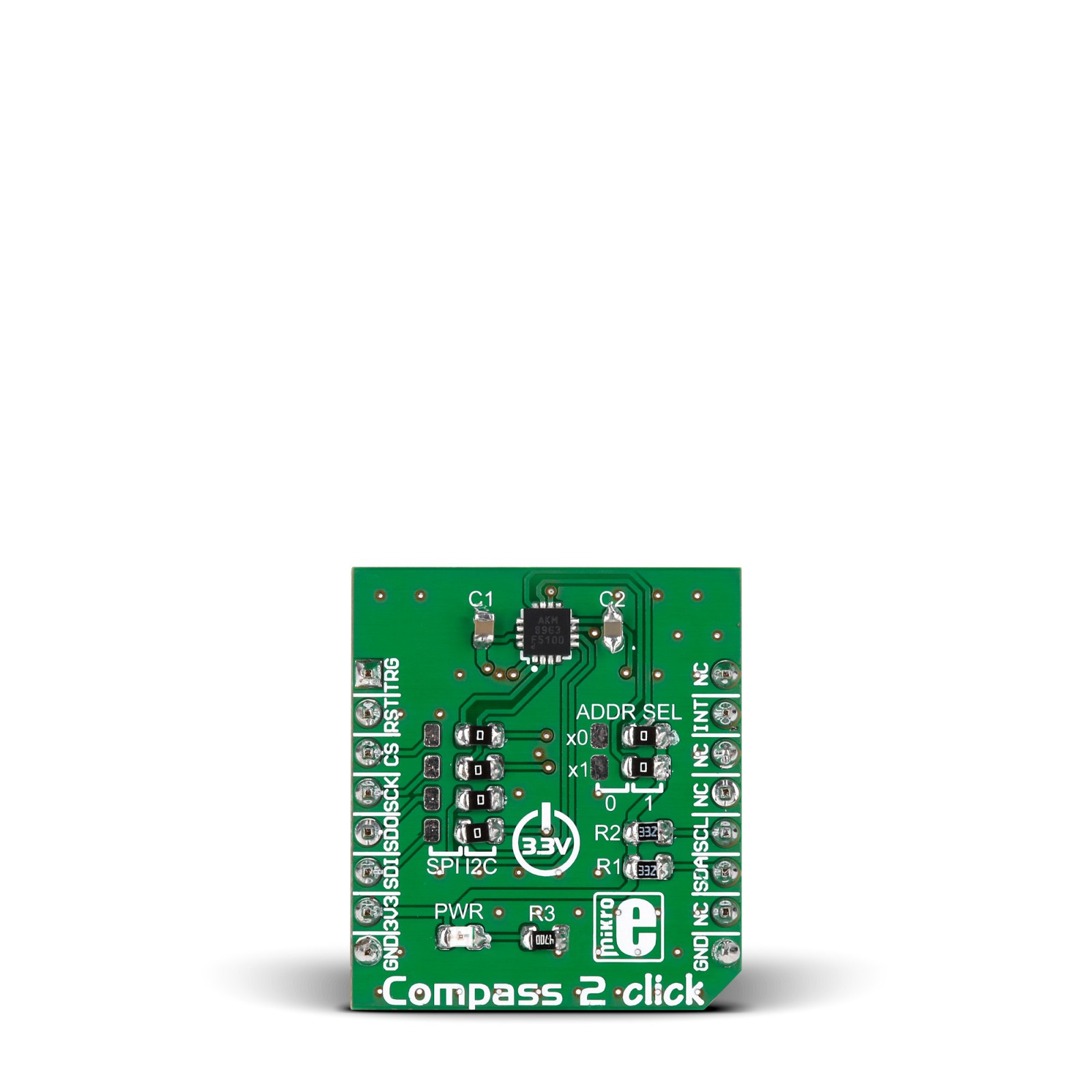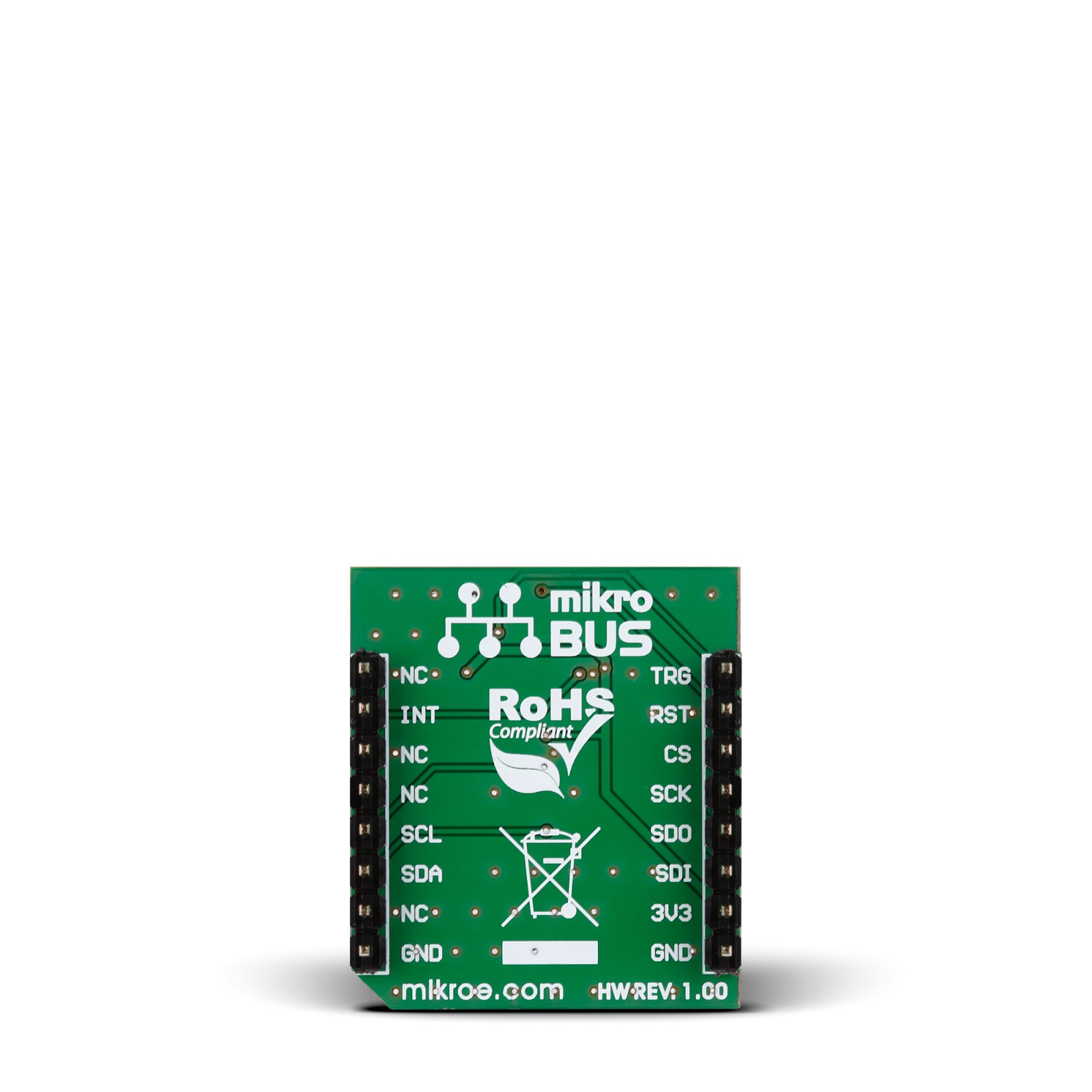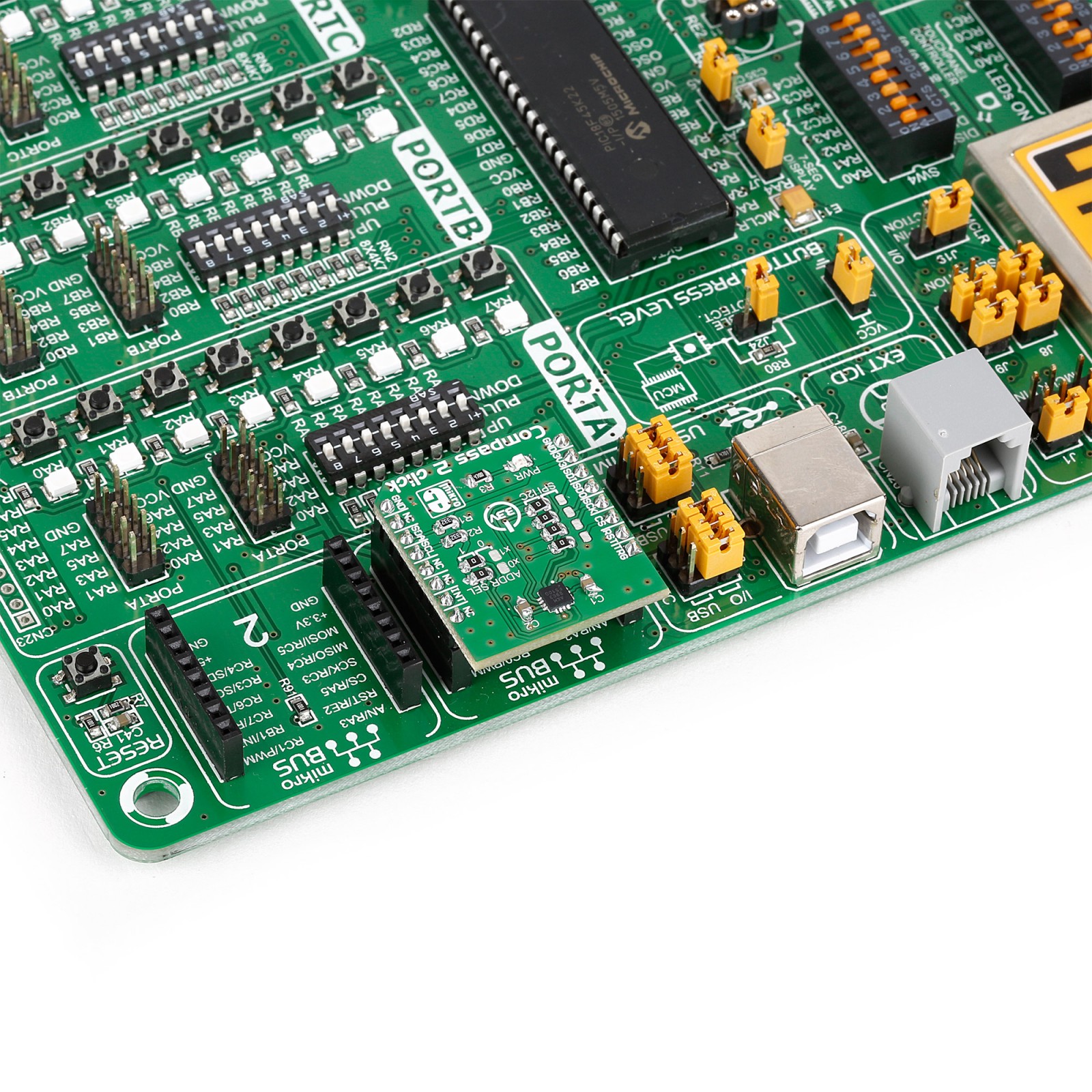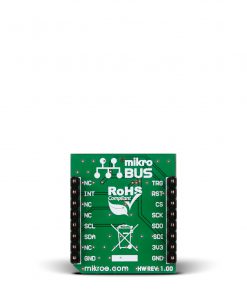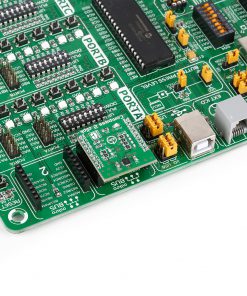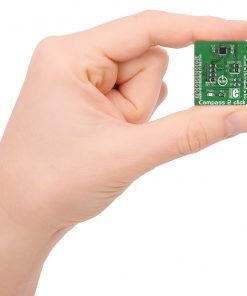Compass 2 Click is a compact add-on board that can measure the three-axis of the magnetic field. This board features the AK8963, a 3-axis electronic compass from AKM Semiconductor. The AK8963 is based on the Hall effect, which is the voltage potential difference regarding the magnetic field. The magnetic sensors of the AK8963 can detect the terrestrial magnetism in the X-axis, Y-axis, and Z-axis and are accompanied by a sensor driving circuit, signal amplifier chain, and an arithmetic circuit for processing the signals for each of the axes. This Click board™ makes the perfect solution for the development of applications based on position detection, navigation, and orientation for portable devices.
Compass 2 Click is supported by a mikroSDK compliant library, which includes functions that simplify software development. This Click board™ comes as a fully tested product, ready to be used on a system equipped with the mikroBUS™ socket.
 MP3 Click
1 × R480.00
MP3 Click
1 × R480.00  3D Motion Click
1 × R1,050.00
3D Motion Click
1 × R1,050.00  GPS Click
1 × R1,050.00
GPS Click
1 × R1,050.00  GSM/GNSS Click
1 × R1,650.00
GSM/GNSS Click
1 × R1,650.00  EXPAND Click
1 × R260.00
EXPAND Click
1 × R260.00 
